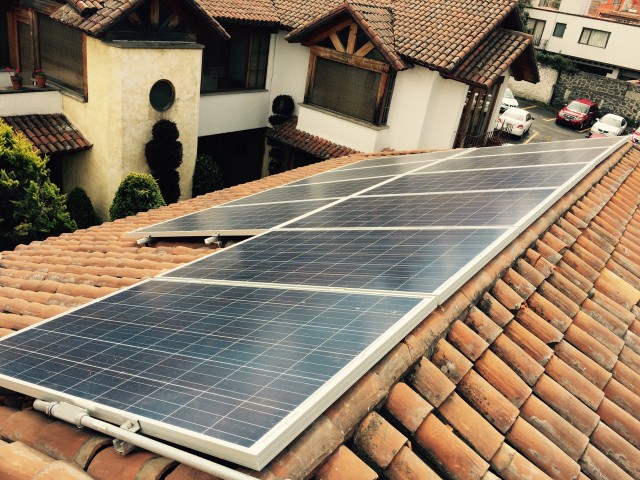Solar power is becoming more attractive as installation costs drop. And one company is capitalizing on the trend to power developing countries with solar energy while giving local economies a hand.
Bright, a solar subscription service, wants to bring solar energy to as many developing countries as possible, beginning with Mexico, where it has been installing solar panels in homes that are still connected to the local power grid, but whose owners want to cut back on their electric bill and augment their power source.
“We are putting rooftop solar panels on people’s homes at no upfront cost by partnering with local installers and financing the installation,” said Bright’s co-founder and CEO Jonah Greenberger in an interview.
Right now, the company is focused on installing the panels in Mexican homes that use the most energy.
“From an environmental perspective, we can have the biggest impact with them,” added Greenberger. “So these are actually large houses that we’re starting with. We’ll move down the pyramid eventually to the poorest people as the cost of solar gets lower and the price of electricity rises as well.”
Working with local partners, Bright provides the software, financing, and maintenance. Using its software, it monitors installations and deploys partners to fix any errors.
“We’re enabling local companies – entrepreneurs – to scale their businesses and provide these services,” said Greenberger. “We’re kind of a backbone for these companies. But we create a local solar ecosystem … in any city we go to.”
When a project is completed, the company charges a monthly fee for the generated power, which is lower than what customers pay for traditional electricity, according to Greenberger.
A single solar panel can power 20-25 percent of a house with up to 250 watts per panel. And the company credits customers who return excess energy to the power grid.
The panels, made of metal, glass and silicon, are recyclable. After 30 years, they need to be recycled.
“The only thing that happens after 30 years is that, basically, the connectors wear down,” said Greenberger. “But you take the same material and just put it together again and you’ve got another solar panel that you can use for another 30 years.”
Bright isn’t the only company forging ahead in the solar power sector. Google recently started Project Sunroof in some U.S. cities, where homeowners can use the company’s mapping and computing resources to figure out whether solar energy works for them and how much it would cost them to switch over and lower their energy bills, given taxes, energy credits and net metering.
But the switchover is proving problematic for traditional utility companies, as more of their customers move off the electrical grid. In the U.S., for example, some utility companies are already looking for solutions to enable them to maintain control, while giving communities the solar power they want, according to the Washington Post.
For now, Mexico is Bright’s proving ground because it is sunny, and “has some of the highest electricity rates in the world and the lowest labor costs,” said Greenberger.
But he said the company wants to put solar panels on as many people’s rooftops around the world as possible “so that we can have a positive effect, like on our planet’s climate, as well as make energy affordable and more enjoyable.”
“We think we can basically prove how our software and finance can enable millions of homes in Mexico to get solar first, then move to Chile and Brazil, and hopefully then parts of Asia: Indonesia, Philippines, China and India, eventually,” he said. “And, you know, together these countries comprise most of the world’s population.”
Greenberger sees solar energy as one of the largest global opportunities as costs continue to slide, while electricity rates escalate in some countries by up to 8-10 percent every year.
“In all of these countries,” he predicted, “homes will be switching over to provide their own electricity with solar panels over the next five years, first in Latin America, and then in Asia … This is pretty exciting because, one: we’re doing something great for the world, but also creating local entrepreneurial ecosystems wherever we go.”


One response to “Bright Powers Developing World, One Solar Panel at a Time”
Dear Aida Akl:
Thank you for your helpful and useful info. It really enlighten me in many way and i hope 1 day, this eco-friendly power generator coverage could reach Vietnam- A tropical city full of sunlight and poor people. This could make a huge change in the way people access to the energy.